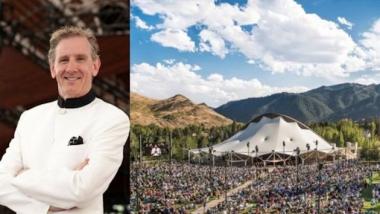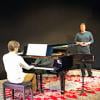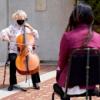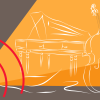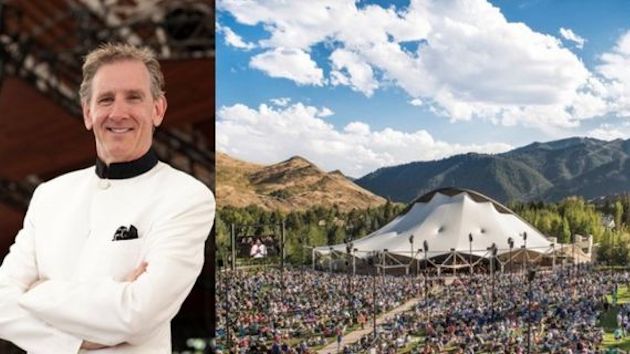
Unlike the majority of zillions of summer music festivals, which canceled during the pandemic or switched to online streaming, the Sun Valley Music Festival presents its 36th season, today through Aug. 19, both in person and online.
One of the country’s largest admission-free music festivals, Sun Valley is meeting the challenge of COVID-19 with an extraordinary effort by more than a hundred sound and video professionals, who filmed musicians in homes and stages across 43 cities.
An important logistical notice up front: all broadcasts are one-time events, not available on demand or for download, so — just like the audience present at the festival — you must make sure to view on the scheduled dates and times. Concerts start at 6:30 p.m. Mountain (5:30 Pacific), streaming begins with introductions a half-hour before that.
The Festival Pavilion, with some 1,500 fixed seats, will not be used, seating is on the lawn, which can hold up to 10,000, watching on a big screen. Because of the social distancing requirements, a maximum of 1,000 will be in the audience.
Music Director Alasdair Neale (marking his 25th year with the Idaho festival), Creative Director James Darrah, and Executive Director Derek Dean have pulled together 14 all-new online cinematic concerts for the season.
Bowing to the provincial within us all, it’s impossible to overlook the “local angle” in the story of a festival, whose artists and staff otherwise come from all over the world: the San Francisco Bay Area has a major role in this event 754 miles from the city. Neale, formerly with the SF Symphony, has headed the Marin Symphony for 21 years; Darrah is responsible for numerous SF Symphony productions and created an SF Merola Opera Program sensation; Dean formerly served as COO of SF Symphony.
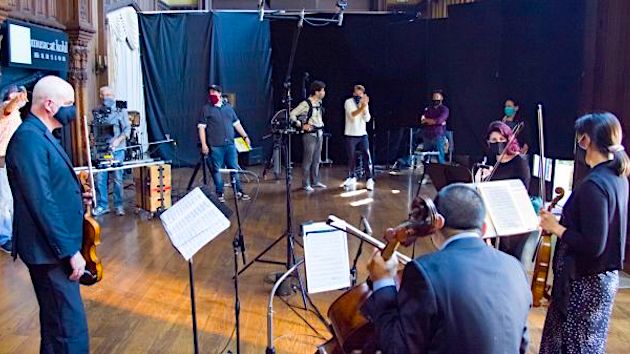
Also, musicians of the SF Symphony, Opera Parallèle Creative Director Brian Staufenbiel, who is directing Missy Mazzoli’s Vespers (Aug. 11), and co-directing (with Alexander V. Nichols) Mason Bates’s Mothership (Aug. 6).
The list of participating artists is spectacular, from Orion Weiss at the opening concert to Daniil Trifonov on Aug. 9, playing Beethoven’s Piano Sonata No. 18 and Mussorgsky’s Pictures at an Exhibition.
Among other festival highlights:
Milana Elise Reiche and Rebecca Corruccini play Jean-Marie Leclair’s Sonata in E Minor for Two Violins, and Weiss performs Beethoven’s Appassionata sonata on July 28.
An intriguing trio of works is offered on July 30: Amos Yang plays the last of J.S. Bach’s Cello Suites, followed by a brass treatment of music from Bernstein’s West Side Story, and Leila Josefowicz performs an excerpt from Esa-Pekka Salonen’s Lachen Verlernt (Laughing unlearnt).
The following day, Kristin Ahlstrom, Bjorn Ranheim, and Peter Henderson perform Beethoven’s Piano Trio in B-flat Major (“Archduke”), then Aug. 3 is the season gala, with Audra McDonald, Kelli O’Hara, and Brian Stokes Mitchell celebrating Broadway. In other years, tickets sold for the annual fundraising concert help keep the rest of the year’s performances free, but the 2020 gala — broadcast live from the East Coast — is also free, “as a thank-you from the festival to the community.”
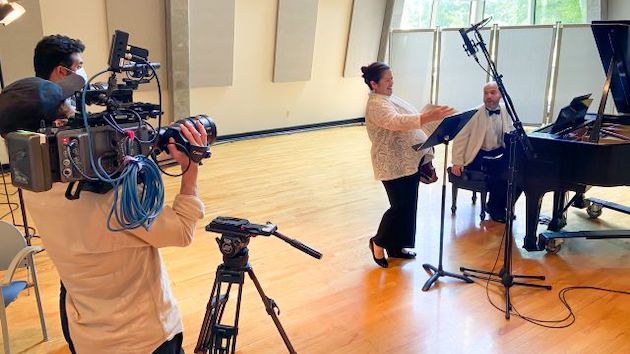
Aug. 15 will bring Brahms’s Piano Quintet in F Minor, with pianist Peter Henderson, and a string quartet from the Festival Orchestra: Erin Schreiber, Shawn Weil, Shannon Farrell Williams, and Bjorn Ranheim.
The season finale on Aug. 19 is an evening of encores, the program to be announced during the concert by Neale.
“What’s truly amazing about the Sun Valley Music Festival is the support of the community here — locals, second home owners, and tourists,” says Dean.
“The Festival receives over 90 percent of its funding each year from individuals who want classical music in their lives each summer, and who want that music to be available for free to anyone in the community.
“Amazingly, this year is no different. Community support remains strong as ever. That’s what convinced Alasdair, the Board, and staff, that we simply had to find a way to make music for them this summer, and to offer it for free. Technology, and the willingness of over 100 musicians and another 100 crew members to dive into this project starting in May, is what’s made it happen.”
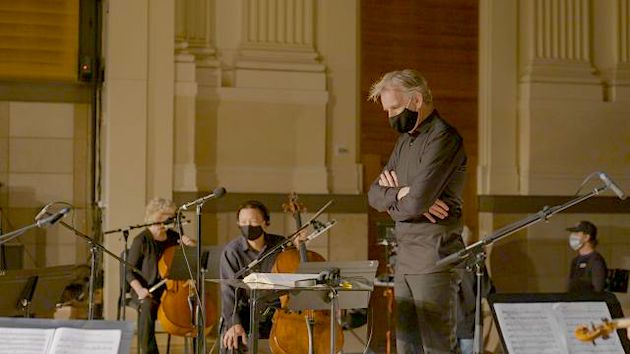
Festival officials did not want a poor substitute for the live experience on stage, says Dean, “We wanted it to be as compelling, although obviously different, as the live experience. That’s why the festival hired movie producers, directors, and audio specialists. The crew includes Oscar, Emmy, and Grammy winners (e.g., Buddy Squires, Leslie Ann Jones). James Darrah came on board as creative director with the charter to create a visual aesthetic to the season that would be as stunning as the music Alasdair and the musicians will make.”
Neale adds:
This has been an amazing journey for us all, and it’s by no means over. The project has grown in size and sophistication way beyond what any of us imagined when we started out, and there’s now a tremendous sense of anticipation in the air, as well as the feeling that, at the risk of overstating things, we’re doing something that nobody else has tried before.
One of the central elements of the festival is that it has the feel of a family reunion each summer. While that’s not been physically possible, for obvious reasons, I’ve been struck throughout this process of the very tangible ways that we’ve been able to connect with each other. Those of us that were fortunate enough to record in our hub locations felt a very special joy in making music in the same physical space once again — something we’ve all been missing desperately.
And for those recording at home there’s been the twin feelings of surmounting a technical challenge (how to play without not only a conductor but any of your colleagues surrounding you?) and the knowledge that, thanks to the spectacular wizardry of our production team, the end result will connect them with their colleagues all over the country in ways that would have seemed unimaginable four months ago.”

